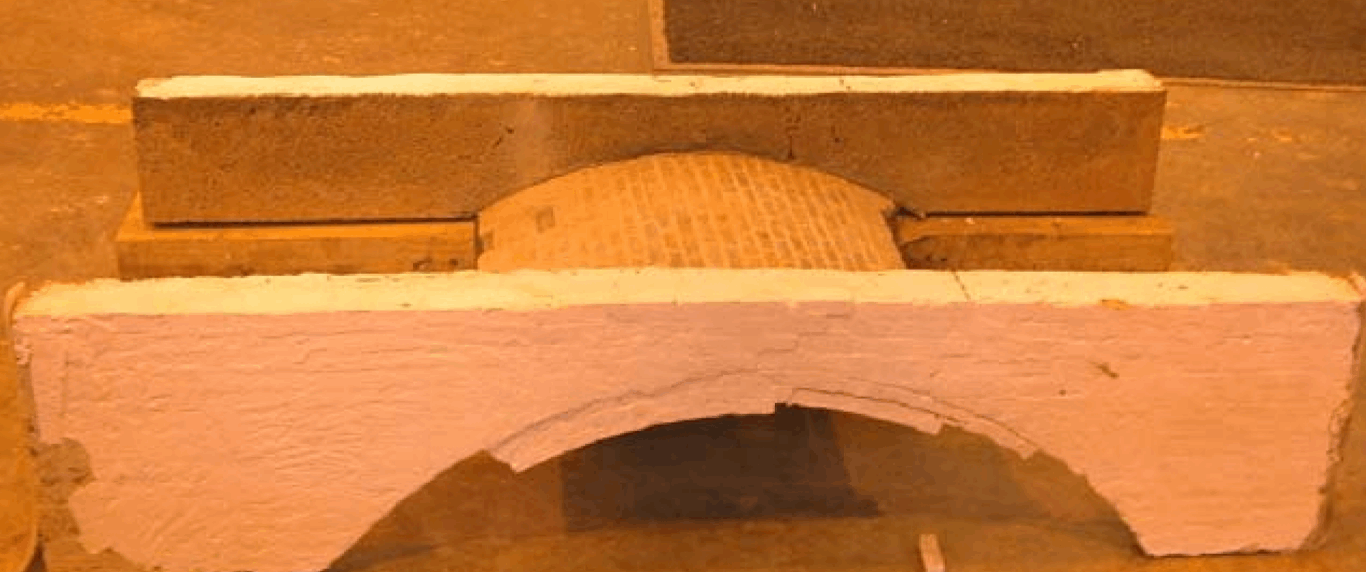M.Miri1 and T.G. Hughes2
1Research Student, Cardiff School of Engineering, Cardiff University, Cardiff, CF24 3TB, MiriM@cf.ac.uk 2 Professor, Cardiff School of Engineering, Cardiff University, HughesTG@cf.ac.uk
ABSTRACT
This paper reports the results of a series of small-scale centrifuge model tests on undamaged, unstrengthened (benchmark) arches and the corresponding strengthened (repaired) structures. This work is part of a series of investigations into the effectiveness of arch repair strategies both on the effect at serviceability and at ultimate load.
The model arches tested were 1/12th scale three dimensional models of a notional 6 metre single span brickwork arch bridge. Two arch geometries were tested with span/rise ratios of 2 and 4; the arches were identical in all other respects. The models include the arch ring, the spandrel wall and the backfill material; they do not include parapets or wing walls. The undamaged and un-strengthened arches were tested under service and just short of ultimate live load. The arches were then repaired by applying reinforced concrete on the inner face of parts of the spandrel walls. The repaired arches were subsequently retested initially with a rolling load and then with a line load which was progressively increased up to full failure.
Test results indicate a significant improvement in the load capacity of the repaired arch. The loads at the failure of the strengthened models were approximately twice the un-strengthened failure load for both the shallow and deep arch geometries. Under service loading the strengthened arches also demonstrated improved (stiffer) performance. The advantage of this strengthening method is that it is efficient whilst being relatively low cost with minimum disruption to traffic using the bridge and has no external visibility.
KEYWORDS: arch bridges, repair, spandrel walls
5a-4



